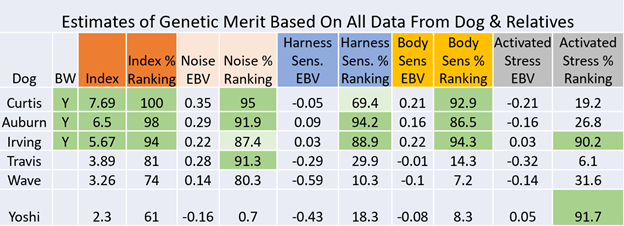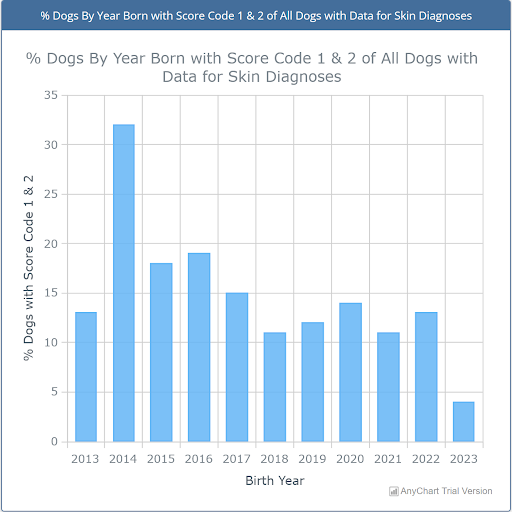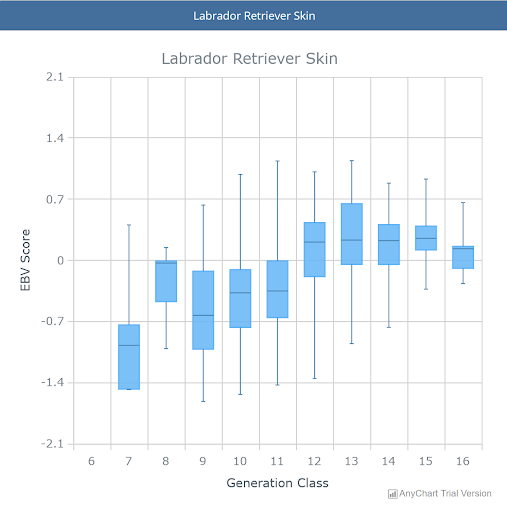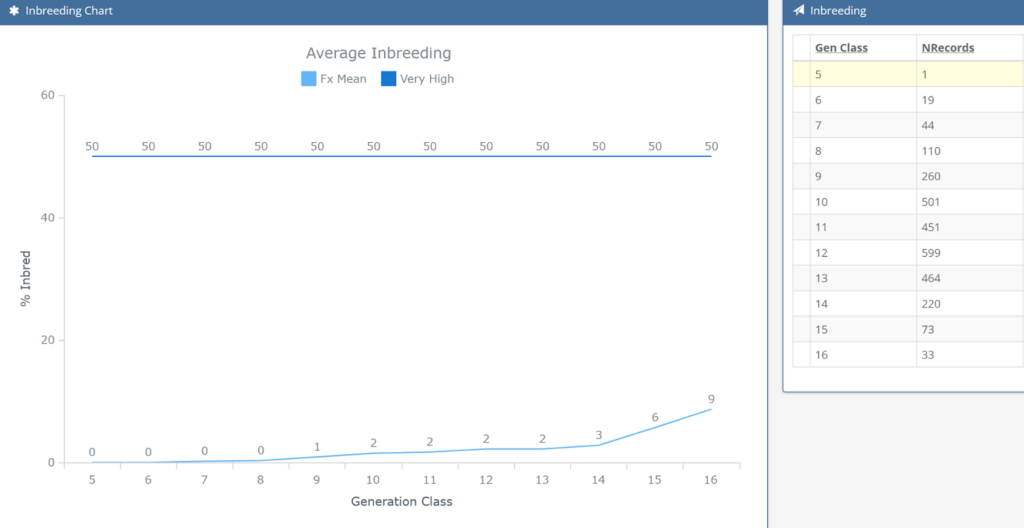Search for working dog conference recordings, articles on health, breeding, socialization and organizational management, webinar recordings and more.
Old Conference Archive Page | View all IWDC 2023 Recordings | View all Breeder's Workshop Colorado Recordings
-
Organization Management
-
Canine Resources
-
-
-
- Emotional Conflict During Socialization
- What is environmental enrichment?
- Distance, Distraction and Duration
- Developing Foundational Skills
- Luring, Marking & Giving Food
- 5 Steps to Progressing Skills
- Dog-Human Relationship Skills
- Utilizing Volunteers
- Biosecurity
- Biosecurity protocol documents
- Example Socialization Schedule
- Puppy Socialization Tracker
- Crate Training
- Managing Inappropriate Interactions between littermates
- Preventing and Fixing Door Dashing
- Follow Me: Video
- Bath Progression: Video
- Intro to New Environments: Video
- Motor Development: Video
- Novel Objects: Video
- Novel Sounds: Video
- Trolley Ride: Video
- Wearing Things/Coat Desensitization: Video
- Carrying Puppies Safely
- Safely Using Stairs: Video
- Puppy Confidence Course
- Socialization Ideas Gallery
- Show Remaining Articles ( 12 ) Collapse Articles
-
- Articles coming soon
-
Education
-
-
- A Behavioral Questionnaire for Selection and Study of Odor Detection Dogs - Presented by Cynthia Otto
- Audeamus PTSD Service Dogs, ACAC Accredited Peer-Support Model for Veterans and First Responders - Presented by Chris Lohnes and Grace Rath
- Audeamus Service Dogs and University of Saskatchewan Research Partnership and Outcomes - Presented by Chris Lohnes & Grace Rath
- Building a Purpose Bred Breeding Program - Presented by Allison Peltier and Rachel Goldammer
- Core body temperature and activity level changes during work and exercise in patrol dogs of the Queensland Police Service - Presented by Jayne McGhie
- Detection of Heterobasidion parviporum scent samples in indoors scent discrimination test by trained volunteer dog-handler teams - Presented by Heli Väätäjä
- Development of a Tool to Aid in the Selection and Pairing of Breeders based on Behavioral Traits - Presented by Jordan Smith
- Early Detection of Heat Stress in Working Dogs - Presented by Andrea L. Henderson
- Effects on behavior and physiology of handling style during veterinary visits - Presented by Karen Overall
- Field cooling for exertional hyperthermia - Presented by Cynthia Otto
- From Anxious to Resilient: The Role of Dynamic Interactive Engagement in Shaping Military Working Dogs - Presented by Melanie Uhde
- Genetic Resources to Improve Dog Health - Presented by Angela Hughes (Royal Canin)
- Genomic research in the Working Dog Field: Combating Canine Cancer through Collaboration and Comparative Oncology Research - Presented by Frances L. Chen
- Handler Perceived Risks to Operational Detection and Patrol Police Dogs - Presented by Jayne McGhie
- Improving Trauma Patient Care - Presented by Kelly Hall
- Neuromuscular Balance Training in Working Dogs - Presented by Andrea L. Henderson
- Occupational Risks and Specialized Veterinary Care for Working Dogs - Presented by Cynthia Otto
- Putting working dog research into practice: development of science-based guidance notes - Presented by Fiona Williams
- Rating of Perceived Exertion in Working Dogs - Presented by Andrea L. Henderson
- Real-world experience with liquid biopsy testing for cancer detection in working dogs - Presented by Jill Rafalko
- Specialty Practice Behavioral Problems and Outcomes in Companion Dogs - Implications for Working Canines - Presented by Walt Burghardt
- Start of life – Feeding during pregnancy and lactation to increase reproductive success - presented by Angela Hughes (Royal Canin)
- Teaching Collar Yielding as a Foundation Behavior - Presented by Patrick Glines
- The Doberman Diversity Project: a Citizen Science approach to breed improvement - Presented by Sophie Liu
- The effect of inhibitory control, arousal, and affective state in Military Working Dogs Performance - Presented by Astrid Concha
- The effect of training aid volume on odor generalization in detection of chronic wasting disease in deer - Presented by Mallikarjun and Wilson & Cindy Otto
- The Many Dogs Project: A Big Team Canine Science Effort - Presented by Sarah-Elizabeth Byosiere
- Transformative Power of Freedom of Choice in Changing Behavior - Presented by Marty G. Roache
- Turning a Critical Eye on an Established Breeding Program to Improve End Results Using IWDR - Presented by Natalie Ergler and Rachel Goldammer
- U.S. Military Working Dog Welfare - Presented by Desireé Broach
- What is the future of Biological Detection Canines? - Presented by Heather Junqueira & Ken Furton
- Working dog memory and canine gut microbiome - Presented by Xu Wang
- Show Remaining Articles ( 17 ) Collapse Articles
-
- Breeding Healthy Dogs - Presented by Madeline Zimmermann
- Choosing What to Breed For - Presented by Madeline Zimmermann
- Gaiting - with Doug & Colton Johnson
- Genetic Merit Selection - Presented by Madeline Zimmermann
- Improving Behavior - Presented by Jane Russenberger & Dr. David Roberts
- IWDR: Storing your Data - Presented by Rachel Goldammer
- Keep Data on Everything! - Presented by Rachel Goldammer
- Long-Term Colony Management: Balancing genetic improvement breeding for the whole dog - Presented by Dr. Eldin Leighton
- Power of Numbers: IWDR Functions - Presented by Rachel Goldammer
- Producing Puppies - Presented by Dr. Fiona Hollinshead and Dr. Greg Burns
- Puppy Socialization - Presented by Jane Russenberger
- Puppy Socialization for Handling - presented by Doug & Colton Johnson
- Reading Dog Behavior/Emotional States - Presented by Dr. Karen Overall
- Whelping and Neonatal Care - Presented by Dr. Fiona Hollinshead and Dr. Greg Burns
-
- "All about the boy" - Semen Collection and Analysis - presentation by Dr. Fiona Hollinshead
- All about the brood - presentation by Dr. Greg Burns
- Behavior Checklist (BCL) Workshop - with Helen West
- Behavioral scoring in Puppy Raising - presentation by Helen West
- Brood and Whelping Concerns - presentation by Dr Greg Burns
- Calculating Differential Risk of Osteoarthritis in Dogs with Low vs High Hip Scores - presentation by Dr Tom Lewis
- Cardiac diseases - presentation by Dr Kevin Conrad (absent); presented by Dr. Kyle Quigley
- Conditioning Program for Dogs Coming In For Training - presentation by Dr Kevin Conrad (via zoom)
- Critical periods of socialization and impact on temperament of the dog - presentation by Jane Russenberger
- Does early potty training affect indiscriminate relieving? - presentation by Dr Lynna Feng
- Dog behavior is in the eye of the beholder - presentation by Joke Monteny
- Entropion - presentation by Jenna Bullis
- Feeding for Breeding Success - presentation by Dr. Emmanuel Fontaine
- Gait and Structure Evaluation for Guide Dogs - presentation by Peggy Gibbon and Dr Katy Evans
- GDBart Puppy Test - presentation by Helen West
- Healthy microbiome and faecal transplants - presentation by Dr Kevin Conrad (absent); presented by Dr Caroline Moeser
- Hip and elbow assessments - with Dr Bart Broeckx
- How to make breeding decisions on traits without EBVs - presentation by Madeline Zimmermann
- How to use estimated breeding values successfully - presentation by Madeline Zimmermann
- Improving behavior with EBVs: Body sensitivity, Noise Fear, Inhibited by Stress, Activated by Stress, Excitable - presentation by Jane Russenberger
- Improving health using EBVs: Elbow, Skin and Mast cell tumours - presentation by Madeline Zimmermann
- Is it really epilepsy? - with Dr Bob Proesmans & Dr Caroline Moeser
- Neonatal Care - presentation by Dr Emmanuel Fontaine
- Reproductive Trends and Cryogenic Insights from Guiding Eyes - presentation by Clover Williams
- Selecting Reproductively Healthy Dogs - presentation by Dr Emmanuel Fontaine
- Skin allergies - with Dr Caroline Moeser
- Stargardt's disease in Labrador retrievers - with Dr Katy Evans
- Strategies for genetic diversity - presentation by Jackie Clark and Dr Bart Broeckx
- Superficial Digital Flexor Tendon Avulsion - presentation by Dr Caroline Moeser
- The art of insemination - presentation by Dr. Fiona Hollinshead
- The Overall Selection Index - presentation by Dr Eldin Leighton
- What influences semen quality? - presentation by Dr. Tom Lewis
- Show Remaining Articles ( 17 ) Collapse Articles
-
- A detailed evaluation of Spotted Lanternfly (Lycorma delicatula) detection dog training and performance - Presented by Edgar O. Aviles-Rosa
- A novel method for the detection of Japanese knotweed (Reynoutria japonica) using specially trained canines - Presented by Kat Janczur
- AKC Detection Dog Task Force Program: Working with AKC Breeders to Improve Breeding & Availability of Explosives Detection Dogs - Presented by S Goffe
- Assessing working dog fitness with the Penn Vet Working Dog Center Fit To Work program - Presented by Brian Farr
- Assessment of the Agreement between Fosters and Trainers Evaluating Behavior with the C-BARQ and Behavior Checklist presented by Elizabeth Hare
- Behaviour Assessment and IWDR - Presented by Dr Jane Russenberger
- Breeding Strategies and Advanced Reproductive Techniques to Optimize Production of Improved Generations of Specialized Canines at Three major working dog breeding programs in New Zealand - presented by Dr Fiona Hollinshead
- Development and heritability of cognitive traits in Canine Companions dogs presented by Emily Bray
- Digital innovation for working dogs - Presented by Dr Mia Cobb
- Discrimination between SARS-CoV-2 infection and other viral respiratory infections by working dogs - Presented by Nele ten Hagen
- Effect of impulsivity and core effect on training performance in dual purpose military working dogs - Presented by Astrid Concha
- Epilepsy in working dogs - Presented by Prof Holger Volk
- Estimated Breeding Values in IWDR - Presented by Dr Eldin Leighton
- Examining the Role of Significant Others in Canine Welfare within the Context of Veterans Working with Service Dogs - Presented by Linzi Williamson
- Explosive detection canine operational requirements and performance degradation: expert perspectives - Presented by Brian Farr
- Hot Topics in Working Dog Care - Presented by Dr B. Pierce & Dr K. Mann
- Implementation of a plan to decrease arousal and increase motivation - Presented by Robert Dougherty Jr and Alena Heyer
- Improving behavior monitoring within a working dog program - Presented by Becky Hunt
- Incidence of enteric pathogens versus presence of gastrointestinal symptoms in a working dog training facility - Presented by Dr Nicola Cotton
- Investigation of tail injury at Lackland Air Force Base Training Kennels for Military Working Dogs - Presented by Marty G. Roache & Karen L. Overall
- Learning to Smell: Impacts of Training and Experience on Detection Dog Performance - Presented by Nathaniel Hall
- Lecture on Generalization in Detection Work - Presented by Hans Ebbers
- Liquid biopsy screening for early cancer detection in working dogs - Presented by Katherine M. Lytle, DVM, MPH, MS
- Military Working Dog Aggression and Welfare - Presented by Desiree Broach
- Multimodal characterization of detection dog suitability: Combining behavioral, cognitive, and neurological measures for enhancing selection - Presented by Lucia Lazarowski
- Overview of the IWDR for Working Dog Organizations - Presented by Dr Eldin Leighton
- Pandemic or pandemonium? Creating standards for medical detection dogs - Presented by Dr Cynthia Otto
- Penn Vet Working Dog Center Fit To Work program foundational fitness development and training - Presented by Meghan Ramos
- Preliminary Accuracy of COVID-19 odor detection by canines - Presented by Kenneth G. Furton
- Prevalence of Canine Degenerative Myelopathy SOD-1 Mutation in Working Shepherd Dogs across Australia and New Zealand - Presented by Jayne McGhie
- Scent dog identification of SARS-CoV-2-infections- a double blind study - Presented by Esther Schalke
- Solving cold-cases: Dogs can match human scents collected several years apart - Presented by Margot Perez
- The Application / Practical Implementation Pro/Cons of Covid-19 Olfactory Detection Dogs - Presented by Prof D Grandjean
- The Domestic Breeding Consortium: Odor Detection Canine Selection, Breeding, and Early Training Techniques - Presented by Karen Meidenbauer
- The effect of maternal style on later puppy behavior in Canine Companions dogs - Presented by Brenda Kennedy
- The use of historical health records at The Seeing Eye in genome-wide association studies for canine health traits presented by Katy M. Evans
- Training with Varying Odor Concentrations: Implications for Odor Detection Thresholds in Canines - Presented by Mallory DeChant
- Transitioning a Therapy Dog Program Online: What's In It For the Dog? - Presented by Ben Carey
- Using IWDR's Advanced Tools to Improve HeaLth and Behaviour - Presented by Dr Eldin Leighton
- Using Single-Step Genomic BLUP to Compute Genomic Enhanced Breeding values for Self-Modulation in Working Dogs presented by Molly Riser
- Using trained dogs and organic semi-conducting sensors to identify asymptomatic and mild SARS-CoV-2 infections - Presented by Dr Claire Guest and Prof James Logan
- Working Dog Welfare: Where are we now and where are we going? - Presented by Dr Mia Cobb
- Show Remaining Articles ( 27 ) Collapse Articles
-
- A canine thermal model for mitigation of heat strain in working dogs - Presented by C. O'Brien
- Building a better detector dog: Lessons learned and (many) questions remaining to be explored in Auburn University’s 19 years of detector dog production - Presented by P. Waggoner, PhD
- From Puppyhood to Adolescence: Longitudinal Cognition Study at Canine Companions for Independence - Presented by K. Levy
- Genome-wide association studies to identify loci and variants associated with behavioral traits in dogs - Presented by V.D. Marinescu, PhD
- Hyper-reactivity in military working dogs: a report of two cases - Presented by O. Soares, DVM, PhD
- Measuring, and determining factors affecting performance of glycemic alert dogs - Presentation by N. Rooney, PhD
- Neuromotor development in puppies: implications for training and fitness - Presented by B. Pierce, DVM, MS, DACVIM, DACVP, DACVSMR
- Odour generalisation – theory and practice - Presented by A. Schoon, PhD
- Putting working dog research into practice: development of science-based guidance notes - Presented by V. Ratcliffe, PhD
- Referential focus - pet & working dogs - Presented by K. Overall, MA, VMD, PhD, DACVB
- Statistics for working dogs – how do you know if your test/assessments are better than a coin toss? - Presented by A. Dunham, PhD
- Temperament and EBV - Presented by Erling Strandberg, PhD, SKK
- Testing dogs for behaviour in Sweden: Canine temperament - assessment and heritability & How you assess temperament - presented by Åke Hedhammar DVM, PhD & Kenth Svartberg, PhD
- The chemistry of odor: How understanding odor can foster a better detector - Presented by L. De Greeff, PhD
- The opioid crisis and working dogs - Presented by C. Otto, DVM, PhD, DAVCECC
- What helps and what hinders assistance dog/puppy raising practices? - Presented by Doc Loc Mai (Jimmy)
- Working Dog Centre: Working hard for working dogs - Presented by W. Baltzer, DVM, PhD
- Show Remaining Articles ( 2 ) Collapse Articles
-
-
-
-
Payment and Accounts
What are EBVs and how do they help?
0 out of 5 stars
| 5 Stars | 0% | |
| 4 Stars | 0% | |
| 3 Stars | 0% | |
| 2 Stars | 0% | |
| 1 Stars | 0% |
What are EBVs?
Estimated Breeding values (EBVs) are a genetic selection tool we can use to identify which breeding dog has better genetic merit for certain desirable traits, compared to other dogs of its breed. Dogs don’t always produce themselves (“breed true”) because what you see (phenotype) is a combination of the dog’s environment and genetics.
Most behavior and health traits are controlled by many genes (polygenic) and with each mating, the mix of genes is not exactly the same as either parent. Instead the mix of the two parents creates a unique combination of genes for that individual which changes the genetic potential for that individual. EBVs combine all of the data on all dogs and uses the pedigree relationships to predict the genetic merit much more accurately than what is observable.
The interesting thing about EBVs is that they incorporate data not just from the dog in question, but also its relatives and progeny. Nearly complete data on all or most dogs from multiple generations for a trait provides an accurate understanding of the real genetic merit of the dog and some idea about other related dogs (depending on the depth of data on the dogs and all close relatives). EBVs enable us to make more informed decisions that can result in real changes in the health and behavior of our dogs when used correctly over multiple generations, and produce puppies more ideal for your program (based on the traits you’re looking for – like improved hip health or certain temperamental traits). Here are some examples of how EBVs assist with this:
- Selecting your next generation of breeding dogs: Which young adult offspring from litters available to you are most likely to produce improvement in certain traits. Keep as breeders the offspring that are more highly ranked than your current breeders.
- Which breeding dogs to pair: Which mate maintains genetic diversity (e.g. limits the rise of inbreeding) but also compliments the improved traits you are looking for.
- Help guide you so you don’t “throw the baby out with the bath water”. No dog is perfect. Start with what you have, store the data and use it to select genetically better dogs in the next generation. Establish breeding goals with like-minded breeders and together make data driven decisions to breed dogs that are healthy and meet your other breeding objectives through improvement with each generation.
Estimated Breeding Values have been used in cattle since the 1950’s with great success, and have been implemented by a few guide dog organizations since the 1980s, For most others, EBVs for working dogs are a comparatively new concept but one made available to working dog organizations thanks to the International Working Dog Registry, which combines EBV specific data behind the scenes to calculate EBVs while keeping user and organizational private data secure.
Throughout this website and article you will find many more resources on EBVs, genetics and breeding, targeted specifically to dog breeders to learn about EBVs and understand how to use EBVs effectively.
Concepts of using data to determine risk for a disease is very common in human medicine. The terms used in the below video (“Polygenic Score”) are different, but the it is still helpful in explaining how data can identify genetic risk (which in humans is used to help identify risk of developing a disease and implement preventative care and early screening).
Video from the Broad Institute, available on Youtube: https://www.youtube.com/watch?v=HwEAjZWPw2k
An EBV is a number
Just like the “Polygenic score” in the video above, an EBV is a number that is a prediction of an individual dog’s genetic merit for that trait. EBVs are calculated from whatever health and behavior data are available about that dog and all dogs of that breed which have data on that trait. In the International Working Dog Registry, EBVs are currently calculated in IWDR for Labrador Retrievers, Golden Retrievers and German Shepherds as those are the breeds most commonly entered into the database and therefore have sufficient health and behavior data available for EBV calculations.
The actual EBV is a number from 1 to -1 as seen in the example below. However, to make EBVs more user-friendly, the IWDR provides a percentile ranking of the dog, based on its raw EBV data, so you know at a glance where that dog stands in comparison to your other candidates and the other dogs of its breed. Breeding managers use the percentile ranking to identify which of the young dogs are among the top 20-25% of dogs available to be among the pool of dogs which are further evaluated as replacement breeders. Dogs with the higher percentile ranking are more likely to produce the desired trait than dogs with a lower percentile ranking. Genetic improvement only occurs when the next generation is better than the one before.
Below is an image showing some example EBV data. You can see corresponding percentage rankings for each EBV. For example, dog Curtis has a Noise EBV of 0.35 which when compared with all other Labradors at that time, Curtis has one of the highest EBV values and is in the 95th percentile (e.g. top 5%) of his breed for the “Noise” trait.

Genetic Selection Methods
With that in mind, how do EBVs compare to other typical selection methods?
Phenotype Selection
The most common type of genetic selection is phenotype selection. This method involves studying phenotype data on the dogs under consideration, including the data you can gather on their relatives. Most of that data comes from:
- searching online registries for health clearances and performance titles
- speaking with other breeders/organizations
- and observing dogs performing in behavior tests, work, shows or competitions.
- You may also use tools to assess and preserve genetic diversity while practicing line-breeding to intensify desired phenotypes (for example, calculating inbreeding coefficients to maintain a level of genetic diversity during line-breeding).
There are significant risks when relying on phenotype selection: unfortunately, not all relatives are represented and often, registries only report information on unaffected (“Normal”) dogs. You may be forced to rely on second or third-hand subjective opinions on a dog’s performance or behavior. You may be subject to selection bias, where only some pieces of the whole story are made available for you.
The most frustrating aspect of phenotype selection is that despite all of the cost and effort invested, breeders are still at the mercy of chance to systematically improve their dogs’ health, behavior, working ability and conformation simultaneously while maintaining genetic diversity in the population. With the ever-increasing number of genotypes being reported and other tools now available, even the most adept breeder studying the data of dogs and their relatives cannot adequately estimate the relative genetic value of the underlying genes and how they will interact across loci in the next generation.
For traits or breeds where EBVs are not available, phenotype data on all or most relatives can be useful. However, EBVs are the most effective in systematically making genetic improvement.
- Learn more on making breeding decisions without EBVs here, This presentation by Madeline Zimmermann is only available to IWDA members.
Genetic Tests
The expression of some diseases and physical traits such as coat color are controlled by one or a few genes for which there are commercially available tests. Test results from a reliable laboratory are successfully used by breeders to avoid matings that have a high risk of producing affected progeny. Genetic test results are taken into account whether EBVs are used or not.
The 3 Principles of Genetic Selection
Breeders using EBVs must also consistently implement the 3 principles of genetic selection in order to maintain diversity and direct genetic improvement over generations of selection. By understanding the principles of genetic selection and by consistently applying these principles over generations, you can achieve a measurable increase in the quality of dogs in your breeding program.
Successfully Using EBVs
When used properly, EBVs have been proven to work Key points to reliably improve the traits selected for are to:
- Collaborate with others to collect data measured in the same way on all or most dogs for the most important traits
- Enter your data and pedigrees through at least 5 generations to tie the dog’s together.
- Consistently use the 3 principles of genetic selection by:
- Choosing the next generation of breeders that are genetically better than the generation before.
- Choosing mates which limit the rise in inbreeding (which maintains genetic diversity)
- Limiting the number of progeny any individual dog produces
You will see improvement after 2-3 generations and can reliably improve the traits selected for. Breeding dogs no longer has to be the “heartbreak hobby” where breeders work so hard to make good decisions but are at the mercy of chance. With EBVs, breeders can greatly increase their odds in the next generation being better than the one before. Breeders still use all of their knowledge of the lines but have a powerful tool to really make a difference.
- Learn more about EBV accuracy here.
- Why are EBVs different for littermates? discusses heritability of some traits used in EBVs.
- What data should I collect?
As we mentioned earlier, current EBV data in the IWDR is available for Labrador Retrievers, Golden Retrievers and German Shepherds. Over time, organizations have worked with the IWDR to define which traits they need to improve through genetic selection, and assessments have been made to confirm which traits are most heritable and therefore more useful to include in EBV calculations. Below are some examples of genetic improvement through the use of EBVs.
Genetic Improvement Using EBVs
The example below is from a breeding colony established in 2013 where many different organizations own the breeding dogs and all progeny have the same data collected – in the same way, therefore, consistently – for the desired traits. The principles of genetic selection have been used with IWDR EBVs for 10 years (3 generations).
The graph below shows the reduction in the percent incidence of dogs with the undesirable skin quality scores which include diagnoses such as atopy and chronic ear infections. The first generation consisted mostly of breeders which had the more desired skin quality. They produced some offspring that were like them, but also produced a higher percent of offspring with undesirable skin diagnoses. Over the next 10 years (3 generations) of being able to use EBVs to identify the replacement breeders that were better than the existing breeders, the percent of dogs with the undesirable skin diagnoses declined. Because they also used a selection index to “breed for the whole dog”, this collaborative breeding group also reduced the incidence of undesirable diagnoses in heart, elbow, hip, other skeletal, neurologic and eye problems while also making some progress or at least maintaining a low incidence of undesirable working behaviors.
- Long-Term Colony Management: Balancing genetic improvement breeding for the whole dog – Presented by Dr. Eldin Leighton (Available to IWDA members only)
- What is a selection index?

The box and whisker plot below displays the average EBVs by generation for this same colony for the skin quality EBV. The blue box represents the middle 50% of the EBV’s for the dogs born in that generation class. The line above represents the top 25% of the EBVs for dogs with the best genetic merit. The line under the blue box is the 25% of EBVs for dogs with the lowest, least desirable genetic merit. It is obvious to see that with each generation the bottom blue line gets shorter and also higher. Selective breeding using EBVs and the principles of selection improved the overall skin quality in this breeding colony for all dogs, not just the parents.

At the same time, the rate of increase of inbreeding was well controlled. The last 2 generations are represented by only 73 and 33 dogs which may or may not accurately reflect the actual rate of rise of inbreeding in these recent generations. However, it is important to check at least quarterly so adjustments in mate selection can be made to choose mates where the progeny will have lower inbreeding coefficients.

Additional Resources
- How to use EBVs
- Does using Estimated Breeding Values cause the Inbreeding Coefficient to increase?
- Advancing Genetic Selection and Behavioral Genomics of Working Dogs Through Collaborative Science
These resources are only available to IWDA members. Not a member? Become one today.
- How to use estimated breeding values successfully – presentation by Madeline Zimmermann
- Improving health using EBVs: Elbow, Skin and Mast cell tumours – presentation by Madeline Zimmermann
- Improving behavior with EBVs: Body sensitivity, Noise Fear, Inhibited by Stress, Activated by Stress, Excitable – presentation by Jane Russenberger
0 out of 5 stars
| 5 Stars | 0% | |
| 4 Stars | 0% | |
| 3 Stars | 0% | |
| 2 Stars | 0% | |
| 1 Stars | 0% |
